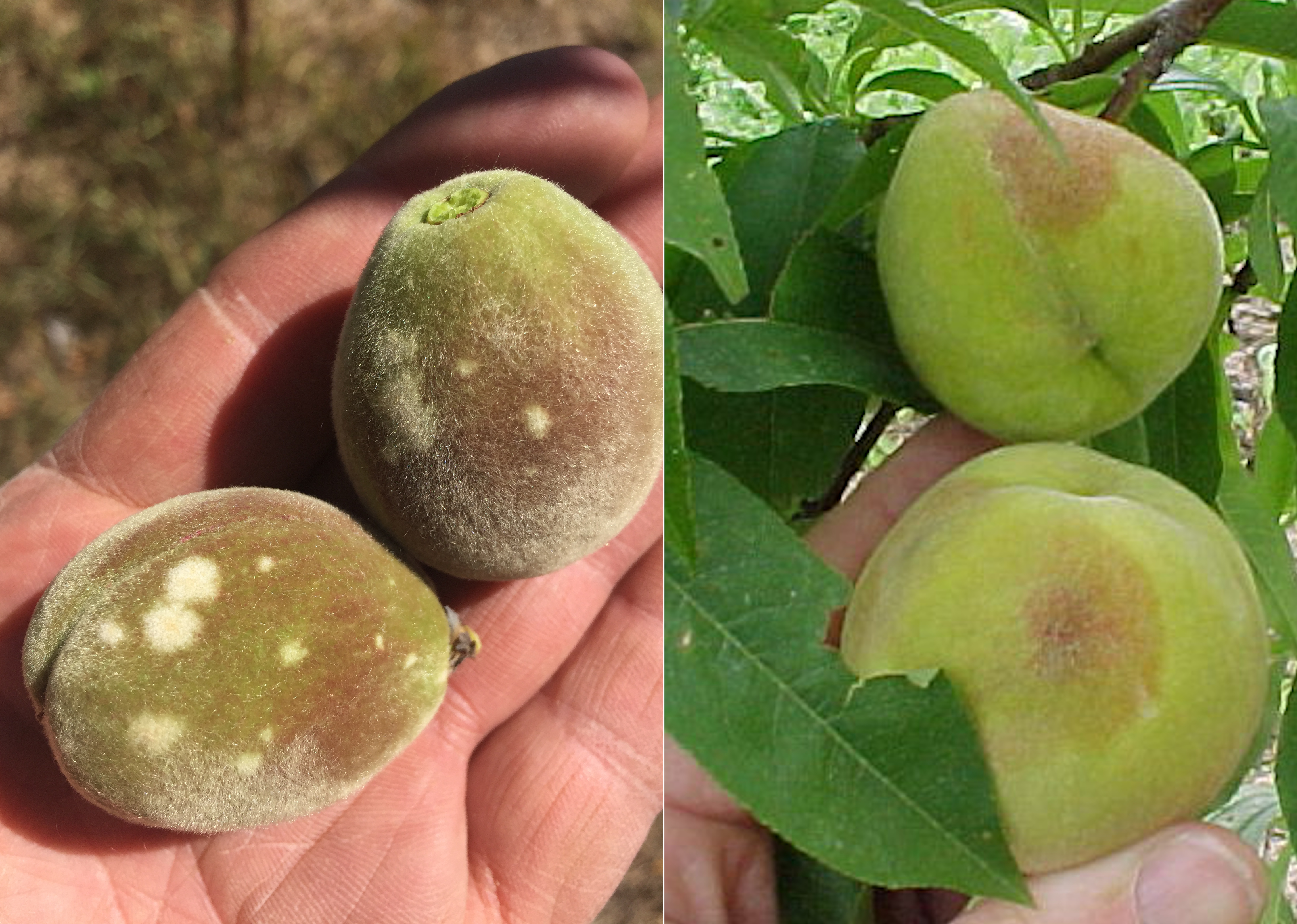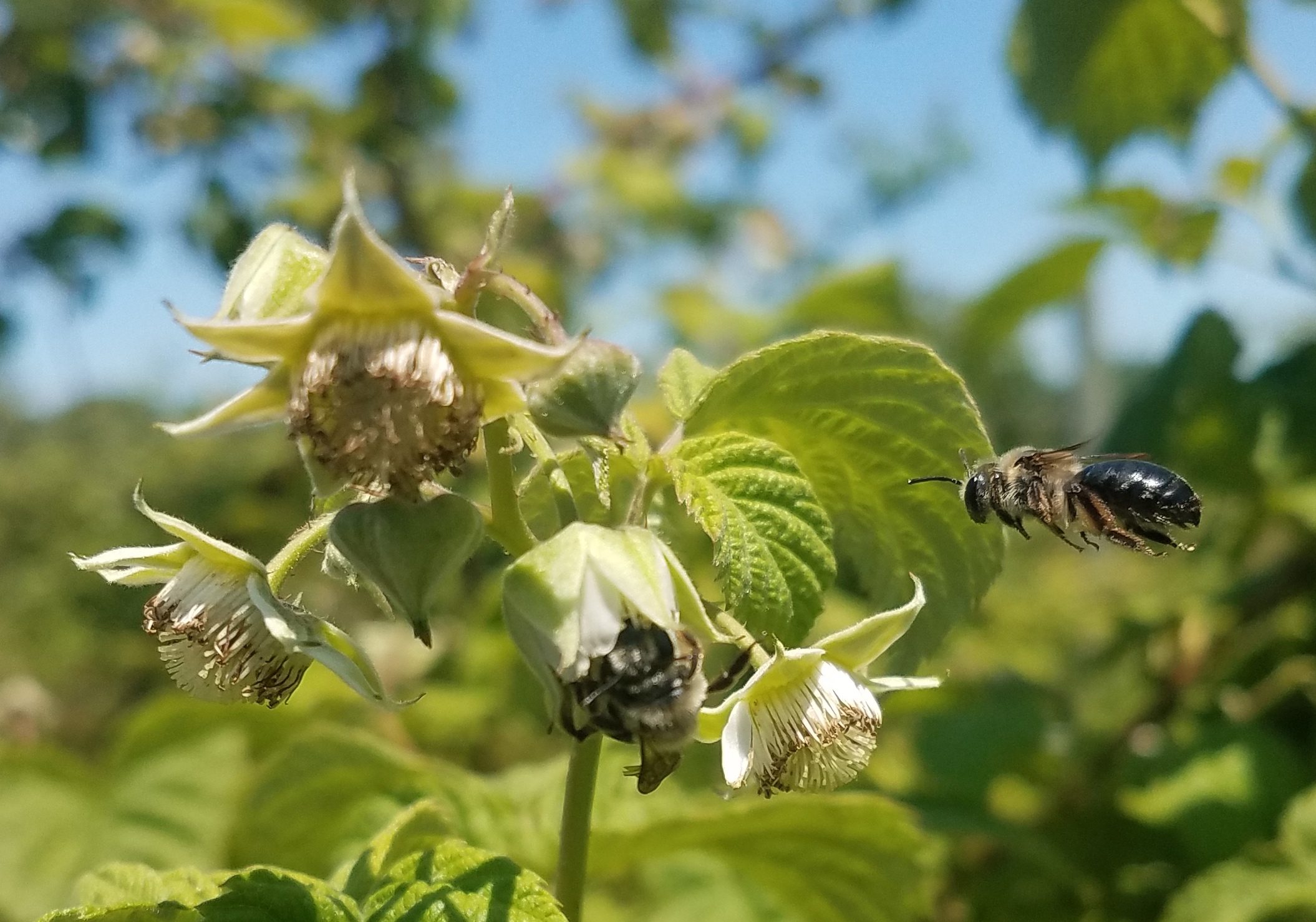Southwest Michigan fruit update – June 16, 2020
Strawberry harvest has begun.

Weather
Last week was cooler than the week before. Highs were in the mid- to upper 70s. The remnants of Tropical Storm Cristobal brought rain and wind Tuesday night, June 9, and Wednesday. A second system brought scattered but severe storms on Thursday and Friday. Total rainfall amounts were from a half-inch to an inch and a half. Total rainfall amounts for the season is 9 inches. Soils are drying out.
Warmer temperatures will return. Expect highs in the 80s and lows in the 60s. Winds should be lights most of the week. The best chance of rain will be Saturday, June 20, into Sunday. With the cooler week, we still picked up a decent number of growing degree days (GDD) last week: 180 GDD base 42 and 125 GDD base 50, respectively 26 and 18 per day.
|
Southwest Michigan GDD summary from March 1 - June 14, 2020 | |||
|---|---|---|---|
|
Station |
GDD 42 F |
GDD 45 F |
GDD 50 F |
|
Benton Harbor (SWMRC) |
1101 |
912 |
644 |
|
Lawton (Lawton) |
1102 |
909 |
637 |
|
Fennville (TNRC) |
986 |
805 |
549 |
|
Average for the SW region |
1091 |
901 |
633 |
|
Average last week |
910 |
741 |
507 |
Tree fruit
Apples on sandy soils are starting to show longitudinal leaf curling due to recent dry conditions. June drop of fruit is still underway. Codling moth, San Jose scale and obliquebanded leafroller flights are underway. The second flight of oriental fruit moth is expected soon. Potato leafhopper adults (bright green) have moved into the area from southern overwintering sites. Tarnished plant bug adults have been active.
Peaches and nectarines are averaging 25 millimeters in diameter with pits still soft. Hand thinning is underway in some orchards. Mycoshield is preferable to copper for suppressing bacterial spot populations now that fruit are exposed. Leaf symptoms of bacterial spot are showing up on susceptible varieties. Leaf drop due to peach leaf curl is underway. White circular spots caused by powdery mildew, Podosphaera leucotricha, are showing up on fruit of susceptible varieties.
Another common peach mildew, rusty spot, spreads from apples to peach and causes rusty spot. Peach and nectarine are susceptible to rusty spot only from shuck split to 2-centimeter fruit diameter. Fruit and leaves are susceptible to powdery mildew much longer. Tarnished plant bug damage to fruit is becoming more common. Both lesser and greater peach tree borer adult moths are being caught.

In cherries, sweet cherries are 18 to 20 millimeters in size, turning color and becoming attractive to spotted wing Drosophila. Tart cherries are approximately 13 millimeters and the crop is generally light to very light due to the spring freeze. Pit hardening is complete. Brown rot has been seen in sweet cherries. Sweet cherries are always susceptible to brown rot. Brown rot management is important when warm temperatures and rain occur together, especially during bloom. Cherry leaf spot symptoms are common in some sites. Regardless of the crop load, protect the leaves from cherry leaf spot. See “Low spray programs for tart cherry” for more information.
In plums, European (Stanley) and Japanese (Shiro) plums are approximately 20 to 24 millimeters in diameter, respectively, in central Berrien County. Crop potential is generally better for European plums than Japanese types. Sprays for black knot are targeted on protecting new shoot growth from bloom to the end of shoot growth. Bacterial spot symptoms on fruit are continuing to expand. Plum curculio egglaying scars are common in many sites.
Apple fruit range from 23 to 35 millimeters in diameter with hand thinning underway. Fire blight symptoms are still rare but expected to increase soon due to multiple fire blight infection periods that occurred during bloom. Maintain sprays to control powdery mildew. Scab symptoms are very common on unprotected crabapples. The sooty blotch and flyspeck model on Michigan State University Enviroweather predicts that considerably more wetting events are needed before symptoms will appear.
Pear Bartlett fruit are approximately 22 millimeters in diameter. Pear scab and watching for fire blight symptoms are the primary disease concerns now. Pear psylla are becoming easier to find.
Small fruit
In grapes, Vinifera wine grapes have not started bloom or are just starting. Juice grapes are in full bloom. Early hybrid varieties such as Marquette and Frontenac have finished bloom. Starting prebloom through bloom, sprays for downy mildew and black rot are critical to protect blooming grape clusters from disease infection. The warm, rainy weather this coming weekend increases risk from these diseases as well as phomopsis. Phomopsis leaf and cane damage has been found. Protect new leaf tissue from powdery mildew infection, which is favored by high humidity and warm weather.
Grape tumid gall is out attacking hybrid grapes as well as some juice grapes. Grape berry moth catches are extremely high in some areas. Sprays for this generation of grape berry moth are usually not recommended but with the challenges controlling the pest last year and the high catches this year, a post-bloom insecticide spray may be warranted in high pressure sites.
Blueberry bloom has ended. We should now be able to evaluate damage from the May 9 freeze and how effective pollination was. In some fields, the growing tips of the shoots were killed by the freeze. These dead shoots can be sites for possible disease infection. Separating freeze damage from disease can be difficult. See “Twig and blossom blights in Michigan blueberries.” There is regrowth starting in many places.
After full bloom, the disease focus shifts to controlling anthracnose infections of green fruit. Anthracnose is also responsible for some blossom blight and probably a lot of the shoot tip dieback we see in the interior of the plant to new shoots from the crown late in the season. See “Blueberry growers need to focus on Anthracnose fruit rot as bloom ends.”
In late bloom and early green fruit, focus on anthracnose and the cherry and cranberry fruitworms, which emerge during bloom. Both cranberry and cherry fruitworm are now being caught in traps. Egglaying is underway for both insects. Biofix was near Monday, June 1, for both these insects. Use the predictive tool on Enviroweather to time your fruitworm control sprays. See “Fruitworm control in blueberries for 2020.” There are some leafroller larvae and other insects out but generally not in numbers that need control.
Strawberry bloom is ending. The fruit are starting to turn color. Harvest has begun for early varieties. The major strawberry fruit pest now is tarnished plant bug.
Bramble bloom is ending. Fruit can be seen. Avoid using pesticides during bloom. Broad mites have been reported in raspberries. Scout for leafrollers, which feed on the leaves. If bloom has ended, a broad-spectrum insecticide is effective.

Currant fruits are close to full size. Some scattered coloring has been seen.
Upcoming meetings
Our regular Southwest Michigan Monday Fruit IPM Updates are available online. Our next meeting is Monday, June 22, at 5:30 p.m. You need to register to receive the login and password for these meetings. The webinars are free and one pesticide applicator credit is available for each meeting. We have over 70 growers attending our Monday meetings. These meetings run through the last week of June.
Related articles
- Southwest Michigan fruit update – June 9, 2020
- New 2,4-D formulation offers greater safety for berries, tree fruit and nut tree crops
- Effectively controlling plum curculio in stone and pome fruits
- A long wetting period could be the start of cherry leaf spot infections for 2020
- Low spray programs for tart cherry.
- Fire blight risk very high in Michigan: Consider treatment options
- Use fungicides for apple scab protection prior to anticipated early infection periods
- SDHI fungicides for apple scab management
- Grape scouting report – June 10, 2020
- Blueberry growers need to focus on Anthracnose fruit rot as bloom ends
- Michigan Blueberry Facts: Anthracnose Fruit Rot
- Fruitworm control in blueberries for 2020
- Blueberry Fruitworm Factsheet
- Twig and blossom blights in Michigan blueberries



 Print
Print Email
Email
